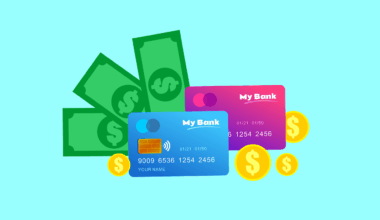Incorporating Video Ads into Your Google Ads Strategy
In today’s digital landscape, incorporating video ads into your Google Ads strategy can significantly enhance your marketing efforts. Videos allow marketers to engage their audience in a dynamic way by providing visually appealing and informative content. Unlike traditional ads, video ads can showcase products in action, tell a compelling story, and spark an emotional connection with users. This approach contributes not only to brand awareness but also increases the likelihood of conversions. As Google Ads continues to evolve, leveraging video ads should be a key component of any successful campaign. By targeting the right audience with meaningful video content, brands can effectively capture attention across multiple platforms. Think about the massive reach of platforms like YouTube and how integrating video ads can amplify your presence there. The combination of visual and auditory elements in video content helps convey messages quickly while appealing to various learning styles. Furthermore, data analytics enables you to track engagement and adjust your strategy to optimize performance. Overall, utilizing video ads within Google Ads strategies positions brands to achieve better search engine marketing results. It’s an opportunity you shouldn’t miss. However, planning is essential for success.
To effectively integrate video ads into your Google Ads campaigns, it is important to understand various ad formats available. Common video ad types include skippable ads, non-skippable ads, bumper ads, and more. Each format serves a different purpose and can elicit unique responses from your audience. Skippable ads give viewers control, allowing them to skip the ad after a few seconds. This format can lead to higher engagement from interested parties. On the other hand, non-skippable ads ensure that your message is fully delivered before viewers can continue. They are best for branding but may annoy users, so it’s crucial to craft compelling content that captivates them. Bumper ads, short six-seconds ads, work well for quick brand messages. Understanding these formats allows marketers to make better choices that align with their campaign goals. Select the type suitable for your message and target audience. It’s always beneficial to A/B test different formats in your campaigns to determine what resonates best. Continuous learning through performance analytics is essential for refining your video ad strategy with Google Ads.
Targeting and Audience Segmentation
Understanding your audience is vital when incorporating video ads into your Google Ads strategy. Proper targeting ensures that your video content is reaching the people most likely to convert. Google Ads offers powerful targeting options, including demographic traits, interests, and behaviors. You can effectively segment your audience by using these tools to create tailored ads that speak directly to their desires, needs, and pain points. Consider utilizing custom intent audiences which allow you to target users actively searching for specific products. Additionally, remarketing campaigns can help re-engage users who have previously interacted with your content or visited your website. Tailoring your video messages based on these segmented audiences will increase relevance and potential engagement. Utilize the power of analytics to continually optimize your targeting strategy. Review metrics such as watch time, engagement rates, and click-through rates to assess performance. Engaging your audience with highly relevant content can increase video completion rates and drive better results for your campaigns. Always remember that video ads should not just inform but also entertain or inspire your audience, motivating them to take the next step toward conversion.
Creating compelling video content should also focus on storytelling. Storytelling infuses your videos with emotional resonance and aids the viewer’s connection with the brand or product being promoted. Begin with a strong hook within the first few seconds to capture attention. Craft a narrative that showcases how your product or service can solve a particular problem. This is where visuals come into play. Using high-quality images and graphics can aid in creating a more engaging story. Moreover, concise messaging is crucial; keep it clear and brief to retain attention throughout the duration of the ad. Including a strong call to action (CTA) at the end of your video compels viewers to take the desired step, whether visiting your website or signing up for a newsletter. Experiment with tone and pacing to find the right balance that resonates with your audience while staying true to your brand voice. Always remember to align your scripts with the specific formats you are using to maximize impact. By focusing on storytelling, you can create memorable, effective video ads that foster deeper connections and drive conversions.
Measuring Success with Analytics
Measuring the success of your video ad campaigns is crucial for continuous improvement and strategy optimization. Google Ads provides a variety of metrics to assess performance and understand how effectively your videos engage viewers. Start by analyzing views, click-through rates (CTR), and conversions generated from your video ads. Watch time is another significant indicator; it shows how long viewers are watching your videos before they drop off. High retention rates suggest that your content is engaging and relevant. Further, consider tracking user interactions such as comments and shares, as these can indicate a deeper interest in your content. Getting qualitative feedback can be just as important, so encourage viewers to express their thoughts about your video. Implementing A/B testing allows you to analyze different video lengths, messages, and visuals to determine which versions perform best. Remember to adapt your campaigns based on data insights. If a particular video is underperforming, reconsider its messaging, visuals, or targeting. The ongoing analysis of these metrics will help refine your video ad strategy for improved results in your overall Google Ads approach.
Incorporating video ads into your Google Ads strategy also presents unique challenges that marketers must navigate. One such challenge is ensuring that your videos are optimized for various devices, particularly mobile. With a significant number of users accessing content via smartphones, it’s essential that your video formats adapt well to smaller screens. Always format videos in ways that ensure clarity and visual appeal regardless of the device used. Moreover, loading times play a critical role; lengthy load times can deter users and affect video completion rates. Thus, aim to keep file sizes manageable while maintaining quality. Another challenge is standing out in an increasingly saturated market. Effective ad placement and competitive messaging are crucial. Analyze competitors’ video ads to identify what works, then infuse your unique branding and messaging into your content to create a distinctive presence. Furthermore, stay current with trends and adapt your strategies accordingly. The digital landscape changes rapidly, and being agile in your marketing approach is vital. Preparing for these challenges will bolster your confidence as you venture into video ads through Google Ads.
Conclusion and Future Insights
In conclusion, incorporating video ads into your Google Ads strategy is no longer optional but essential in the current digital marketing landscape. Video content can engage your audience more effectively than traditional text or image ads, making it a powerful tool in nurturing potential customers’ journey. By understanding your target audiences, telling compelling stories, and leveraging Google Ads analytics, you can craft impactful video campaigns that drive results. As we look to the future, anticipate continued advancements in video technology and user engagement methods. Invest in cutting-edge video production techniques and stay responsive to emerging trends in consumer behavior. Implementing more interactive formats, such as 360-degree videos or augmented reality elements, could further enhance user experience. Lastly, don’t underestimate the power of consistency in your messaging. Repeated exposure to thoughtful and engaging video content helps solidify your brand presence in the minds of viewers. Embrace video ads as an evolving aspect of your marketing strategy, and you can achieve more significant engagement, conversions, and overall success in your Google Ads initiatives.


